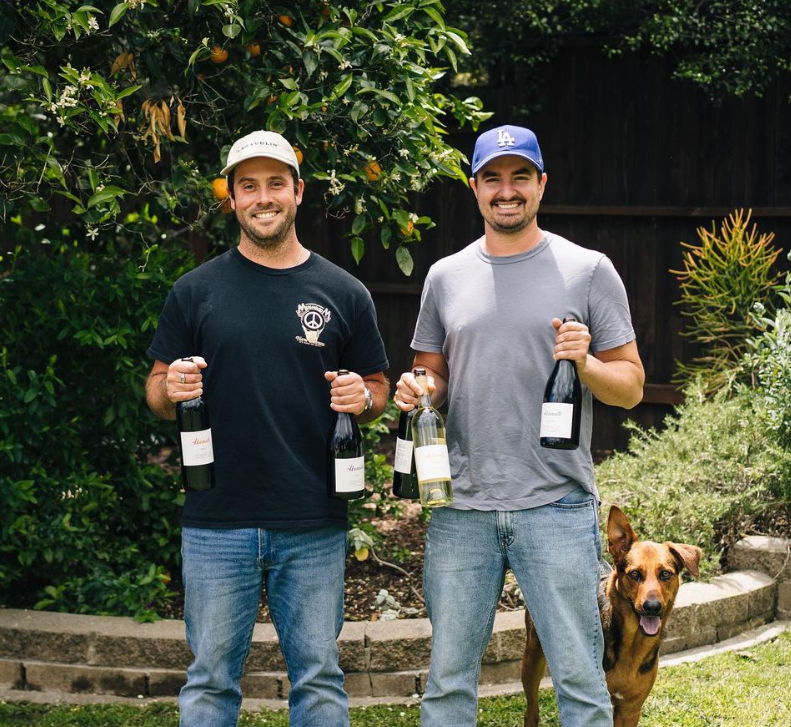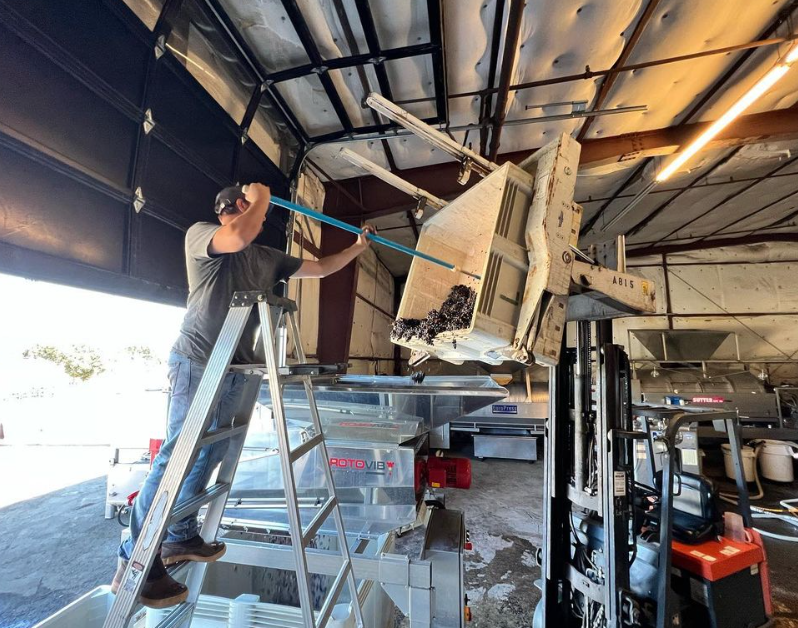Alamati Wine
Get the Dirt from owner / winemaker Cooper Allebrand
“We hope there can be a place in the industry for everyone brave enough to start their own project, however small it may be. ”
What was your first vintage year? Our first vintage was 2020.
How many cases do you make per vintage? We make around 300 cases per vintage. Our 2023 vintage will likely produce about 400 cases and we hope to grow that number as our business grows.
Do you have a Tasting Room? We do not have a tasting room yet, but we hope to have one soon.
What wine made you want to become a winemaker/start your own winery?
I am co-owner and winemaker with Niko Comati. Niko’s experience working a harvest in Piemonte made him fall in love with Nebbiolo. It was his idea to start making Nebbiolo here in Santa Barbara County and our 2020 vintage began as Niko’s personal project. I took on co-winemaking duties before the 2021 vintage when we added the other varietals to our project. The argument can be made that Nebbiolo is the reason Alamati began.
What varietals do you work with?
We work with Riesling, Nebbiolo, Dolcetto, Cabernet Franc, and Syrah. We have added Albariño to the family in 2023. Our lineup of unique varietals allows us to experiment with different styles of winemaking, but we try to stay true to the classical origins of each. We love making Nebbiolo due to the challenging nature of the grape. It ripens consistently later than our other varietals. The naturally high tannin of Nebbiolo makes the maceration process a delicate dance as we try to showcase the power of the grape without over-extracting.
What vineyards do you source from?
Our 2020 Nebbiolo comes from the vineyard formerly known as Mosby Vineyard. The vineyard is now Vega Vineyard. Our Riesling, Dolcetto and Nebbiolo come from different blocks of Lucas and Llewellen’s Los Alamos Vineyard. Our Cabernet Franc and Syrah come from the hillside blocks of Valley View Vineyard in Santa Ynez. We started working with 2 new vineyards in 2023 that we are very excited about. Our 2023 Albariño is sourced from North Canyon Vineyard in Santa Maria. We also sourced 1 ton of Syrah from Ballard Adobes Vineyard. Both the Albariño and Ballard Adobes Syrah are still in barrel.
What type of oak treatment do you use?
So far, we have used neutral French oak for 100% of our red wines. This is partially because all of our lots are small, and any new oak barrels would end up representing 25-50% of the finished wine which is more than what we would stylistically aim for. Each of our red wines spend a different amount of time in barrel based on many factors. For example, the mild nature of our dolcetto allows it to be ready for bottling within 8 months of aging, while the powerful nature of the Nebbiolo requires at least 2 and a half years of barrel aging in order to achieve our desired style.
What do you love about your winemaking region? What makes it different special?
Santa Barbara County’s versatility is what makes a project like Alamati possible. There are not many wine regions that can allow such a vast spectrum of wine styles. Having cool climate subregions like Santa Maria or Santa Rita Hills be just a short drive away from warm subregions like Santa Ynez Valley and Happy Canyon is truly unique and allows winemakers the ability to experiment with different styles with the expectation of equal quality wines.
What’s the story behind your winery name / label?
Niko Comati and Myself, Cooper Allebrand, have been best friends since kindergarden. I followed Niko’s lead into the world of winemaking with the expectation of starting a future project together. “Alamati” is a blend of our two last names.
What's the one thing you wish someone had told you about the wine business before you started your own winery?
We wish we had a better idea of the price of everything involved in the winemaking process before we started. Winemaking can be an expensive endeavor.
Most importantly, what's so great about being small? What can you do as a small winemaker, that wouldn't be possible for larger wineries?
For us, being small allows us to care for all our wines in equal measure. We have the opportunity to personally visit all of our vineyard sites and make informed picking decisions. There is a lot more at stake as a small winery, as one misstep can potentially affect a much larger percentage of your total wine. We do not have the luxury of being able to blend mistakes away into large lots for them to disappear. All of our decisions have to be well thought out and mistakes in the winery need to be kept to an absolute minimum. The 2 winemaker system helps a great deal in this regard as well because we have the ability to talk through our process until we arrive at what we think will be the best solution.
How do you view the future in the wine industry for small-lot winemakers?
The wine market seems to be prioritizing small producers more than ever. Wine drinkers like to understand the story of the wine they are drinking and the producer’s relationship to each wine. We hope there can be a place in the industry for everyone brave enough to start their own project, however small it may be.
If you could choose another wine region to work in what would it be?
We would love to make wine in Barolo. Our love for Nebbiolo naturally brings us to the region responsible for making some of the best wines in the world.
For more information about Alamati Wines, please visit their website or follow them on Instagram.



